South Korea is a dynamic and captivating country, blending rich cultural heritage with a vibrant modern scene. Whether you’re into exploring ancient palaces and traditional markets or diving into bustling cities and stunning natural landscapes, South Korea has got it all. If you’re planning a trip, I’ve got you covered with a comprehensive two-week itinerary that will take you on an extraordinary exploration of the country’s top highlights.
We’ll start in the vibrant capital city of Seoul, where you’ll experience the true heartbeat of South Korea. From historic palaces to trendy neighborhoods, Seoul has something for everyone. Next up, we’ll head to Gyeongju, a city steeped in history and home to fascinating treasures from the past. Then, we’ll make our way to Busan, a coastal gem with its own unique charm and a vibrant food and nightlife scene you won’t want to miss. Finally, we’ll cap off our adventure with a visit to Jeju Island, known for its stunning natural beauty and breathtaking landscapes.
This 14 Day South Korea Itinerary is designed to ensure you don’t miss out on any of South Korea’s diverse attractions. So get ready to immerse yourself in the wonders of this captivating Asian destination. Pack your bags and get ready for an unforgettable journey through South Korea’s vibrant culture and mesmerizing sights!
- Simcard Options for South Korea:
- Best time to visit South Korea:
- Getting around South Korea:
- DAY 1 – 5 | SEOUL
- DAY 6 – 7 | GYEONGJU
- DAY 8 – 9 | BUSAN
- DAY 10 – 12 | JEJU ISLAND
Simcard Options for South Korea:
When traveling to South Korea, staying connected to the internet is crucial, whether it’s for navigating around the city or keeping in touch with friends and family. There are a few simcard options available to visitors to help you stay connected during your trip.
MobiMatter If you don’t need a Korean number and prefer to use your existing number, an eSIM is a great option. You can purchase the simcard online and install it on your phone settings with the provided instructions. Compare different options to suit your data limit requirements and length of stay. Use code LEE.F90459 to receive 50% cashback (up to $5) on your first purchase.
Pre-paid Sim: If you also want a Korean number as well as data, a prepaid simcard is a good choice. Prices vary depending on the length of time you want the simcard. You can find a simcard on Klook and pick it up at the airport. For example, a 10-day prepaid simcard costs about $30.
Portable Wifi: If you want to connect more than just your phone or share your internet connection with your travel companions, a portable wifi device may be your best bet. You can find a portable Wifi device on Klook and pick it up at the airport. For example, a 10-day portable wifi device costs about $35.
We also highly recommend having a portable charger for your phone to ensure you always have enough battery to last the day to help with navigation.
Travel Insurance:
When planning your perfect two-week adventure in South Korea, one crucial element you shouldn’t overlook is travel insurance. It provides peace of mind by covering unexpected events such as medical emergencies, trip cancellations, and lost luggage. For comprehensive and reliable coverage, I always recommend SafetyWing Insurance, which I use for all my travels. They’ve consistently been helpful and dependable. Plus, you can get $20 off your policy by joining through this link.
Best time to visit South Korea:
South Korea is a country that experiences all four seasons, each with its own unique charm. The best time to visit South Korea depends on what you want to do and see.
Spring (March to May) is a popular time to visit South Korea because of the cherry blossom season. The cherry blossoms bloom for a very short period of time, usually only two weeks, and draw visitors from all over the world. This season is also a great time to enjoy outdoor activities like hiking and picnicking.
Summer (June to August) is a hot and humid season in South Korea, but it is also the time for festivals and outdoor events. The beaches are popular during this season, as are the mountainous regions where visitors can escape the heat.
Fall (September to November) is a beautiful time to visit South Korea because of the stunning autumn foliage. This season is also ideal for outdoor activities such as hiking, biking, and exploring the countryside.
Winter (December to February) is the coldest season in South Korea, but it is also a time when the country is transformed into a winter wonderland. Visitors can enjoy skiing, ice-skating, and other winter sports, and the cities are adorned with Christmas lights and decorations.
Overall, the best time to visit South Korea depends on your personal preferences and what you want to do and see. If you’re interested in the cherry blossom season or autumn foliage, plan your trip accordingly. If you’re looking to escape the heat or enjoy winter sports, consider visiting during summer or winter. Regardless of when you visit, South Korea has something to offer for everyone.
Getting around South Korea:
Getting around South Korea is relatively easy, thanks to its efficient and reliable transportation system. Here are some of the best ways to travel around the country:
Trains – South Korea has an extensive network of railways, making it easy to travel between cities quickly and comfortably. The Korea Train eXpress (KTX) is the fastest and most popular train service in the country, with high-speed trains connecting major cities like Seoul, Busan, and Daegu. A Korea Rail Pass can be purchased online in advance and allows you to take unlimited rides on most Korail trains for 3 or 5 consecutive days or any flexible 2 and 4 days.
Express & Intercity Buses – Another affordable and convenient way to get around South Korea is by taking express and intercity buses. These buses connect smaller towns and cities that are not serviced by the train system, and are often cheaper than trains. You can purchase Kobus tickets online or at the bus station.
Flights – If you’re traveling to Jeju Island, taking a flight from Seoul or Busan is the most convenient option. Check Skyscanner for flight times and prices.
Metros – The larger cities in South Korea, such as Seoul and Busan, have an extensive metro system that makes it easy to get around within the city. The metro system is clean, safe, and affordable, and can get you to most major attractions.
Taxis – Taxis are widely available in South Korea and are a convenient way to get around, especially if you’re in a rush. However, they can be expensive compared to other forms of transportation. Be sure to have your destination written in Korean, or show it on your phone to the driver, as many taxi drivers do not speak English.
Overall, South Korea has a fantastic transportation system that is both convenient and affordable. Whether you’re taking the train, bus, or metro, getting around the country is a breeze.
DAY 1 – 5 | SEOUL
Welcome to Seoul, the bustling capital of South Korea and the perfect starting point for your two-week itinerary! Seoul is a city steeped in history, tradition, and modernity, offering visitors an immersive experience in Korean culture.
How to get to Seoul:
Getting to Seoul is easy as most international flights arrive at Incheon Airport, located just outside the city. From there, you can take the Airport Rail Road on the AREX Line to Seoul Station, the main transportation hub in the city. Don’t forget to purchase a T-Money Card from a convenience store at the airport to make travelling around Seoul easier.
Once you arrive at Seoul Station, you can navigate the city using the efficient public transportation system, including buses and the metro. For directions, we recommend using Naver Maps, the most popular navigation app in South Korea. Get ready to explore the vibrant city of Seoul and all it has to offer!
Where to stay in Seoul:
We recommend staying in Insadong, Myeongdong, Hongdae, Itaewon & Gangnam, but if you’re looking for a fun and lively atmosphere, we highly recommend staying in Hongdae!
Day 1: Hongdae, Ikseondong Hanok Village, and Insadong Area
Our first stop is Hongdae, located in the western part of Seoul. This area is known for its lively nightlife, street performances, and youthful energy. Stroll down Hongdae’s main street, filled with boutique shops, cafes, and restaurants. You’ll find plenty of trendy and unique finds here, perfect for souvenir shopping or trying out the latest Korean fashion trends.

Next up is Ikseondong Hanok Village, a quaint and charming neighborhood that transports you back in time. Hanoks are traditional Korean houses that were built during the Joseon Dynasty, and this village preserves some of the original architecture and cultural heritage. Walk along the narrow alleyways and admire the beautifully restored hanoks, now housing cafes, art galleries, and shops. This is a perfect place to snap some photos and take in the peaceful atmosphere.
Finally, we’ll head to Insadong, a neighborhood that offers a mix of traditional and modern experiences. Start at Tapgol Park, where you can see the 10-story stone pagoda, a historic landmark that dates back to the 15th century. Next, walk over to Ssamzie-gil, a colorful shopping complex with unique boutiques and handicraft stores. Finally, explore the famous Insadong-gil, a street filled with traditional Korean art and craft shops, tea houses, and antique stores. This area is perfect for browsing and finding unique souvenirs to bring back home.
After a day of exploring, relax and unwind at one of the many cafes or restaurants in the area. Whether you’re in the mood for traditional Korean food or international cuisine, there’s something for everyone in Hongdae, Ikseondong Hanok Village, and Insadong.
Day 2: Namdaemun Market, Myeongdong, N Seoul Tower, and Itaewon
After a good night’s rest, it’s time to explore more of Seoul’s iconic destinations. Get ready for a day full of shopping, culture, and history.
Start your day by taking the subway to Namdaemun Market, which has been in operation since the Joseon Dynasty. With over 10,000 shops and stalls, it’s a shopper’s paradise. You’ll find everything from traditional Korean souvenirs to modern electronics, clothing, and street food. Be sure to bargain and haggle for the best price!
From there, head to Myeongdong neighborhood, which is one of the busiest shopping streets in Korea. You’ll find an array of beauty stores, fashion boutiques, and trendy cafes. Take a stroll down the streets and enjoy the lively atmosphere.
Next, head to N Seoul Tower, which offers panoramic views of the city. Take the Namsan Cable Car up to the observatory, which stands at 236 meters high. From the top, you’ll see the sprawling city below, including the Han River and mountain ranges.
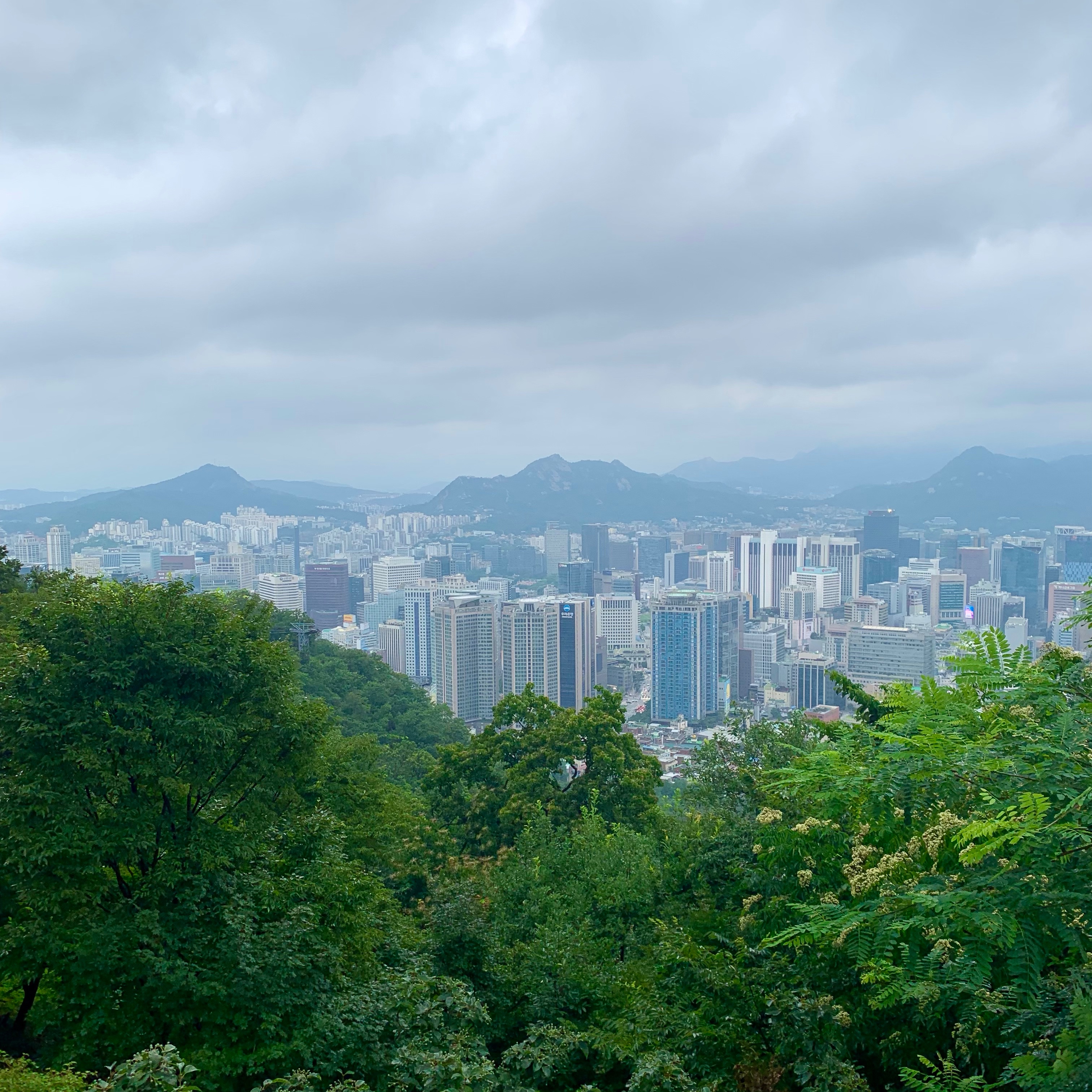
After admiring the view, head on over to Itaewon, the international district of Seoul. Here, you’ll find an eclectic mix of restaurants, bars, cafes, and shops. It’s a great place to try different cuisines and meet people from all over the world.
If you have extra time, consider visiting the War Memorial of Korea and the National Museum of Korea, which are both located in Yongsan-gu. The War Memorial of Korea showcases the country’s history of war and the Korean War in particular. The National Museum of Korea is one of the largest museums in Asia and displays over 220,000 artifacts of Korean history, art, and culture.
Day 3: Cheonggyecheon Stream, Gwangjang Market, Ihwa Mural Village, and Dongdaemun
On day 3 of our South Korea adventure, we embarked on a journey through some of Seoul’s most unique and fascinating neighborhoods. Our first stop was Cheonggyecheon Stream, a serene oasis in the bustling city center. As we strolled along the revitalized waterway, we couldn’t help but feel relaxed and rejuvenated by the sound of the flowing water and the greenery around us.
From there, we made our way to Gwangjang Market, where we were greeted by the sights and smells of one of the most vibrant traditional markets in the country. We tried some of the best street food in Seoul, such as savory mung bean pancakes and sizzling hot bibimbap. As we explored the market’s narrow alleys and stalls, we discovered a wealth of unique Korean handicrafts, fabrics, and souvenirs.

Next, we headed to Ihwa Mural Village, a hidden gem in the heart of Seoul that is home to a variety of colorful and eclectic murals and street art. We wandered through the winding alleys, marveling at the creative and whimsical designs that adorned the walls and buildings.
Our final stop of the day was Dongdaemun, a bustling shopping district that is popular with locals and tourists alike. We explored the vast shopping malls and night markets, searching for bargains and souvenirs to take home. Along the way, we also visited some of the district’s historic landmarks, such as the ancient city gate of Heunginjimun and the futuristic Dongdaemun Design Plaza.
Overall, day 3 was a whirlwind adventure through some of Seoul’s most unique and memorable neighborhoods, and we couldn’t wait to see what the rest of our trip had in store.
Day 4: Gyeongbokgung Palace and Bukchon Hanok Village
On the fourth day of our South Korea itinerary, we immersed ourselves in the country’s rich history and architecture. Our first stop was Gyeongbokgung Palace, a stunning complex of traditional buildings and gardens that served as the main royal palace during the Joseon dynasty. We joined a guided tour to learn about the palace’s history and architecture, including the intricate details of the main gate, throne hall, and pavilions. After the tour, we took some time to wander around the sprawling palace grounds and take in the peaceful atmosphere.
Next, we made our way to Bukchon Hanok Village, a charming neighborhood located in the heart of Seoul. This traditional village is filled with beautifully preserved hanoks (traditional Korean houses) that date back to the Joseon Dynasty. We wandered through the narrow alleys, admiring the unique architecture and quaint courtyards. We even had the chance to experience a traditional tea ceremony at one of the village’s tea houses.
The combination of exploring the grandeur of Gyeongbokgung Palace and the charming ambiance of Bukchon Hanok Village made for a memorable day of immersing ourselves in South Korea’s rich cultural heritage.
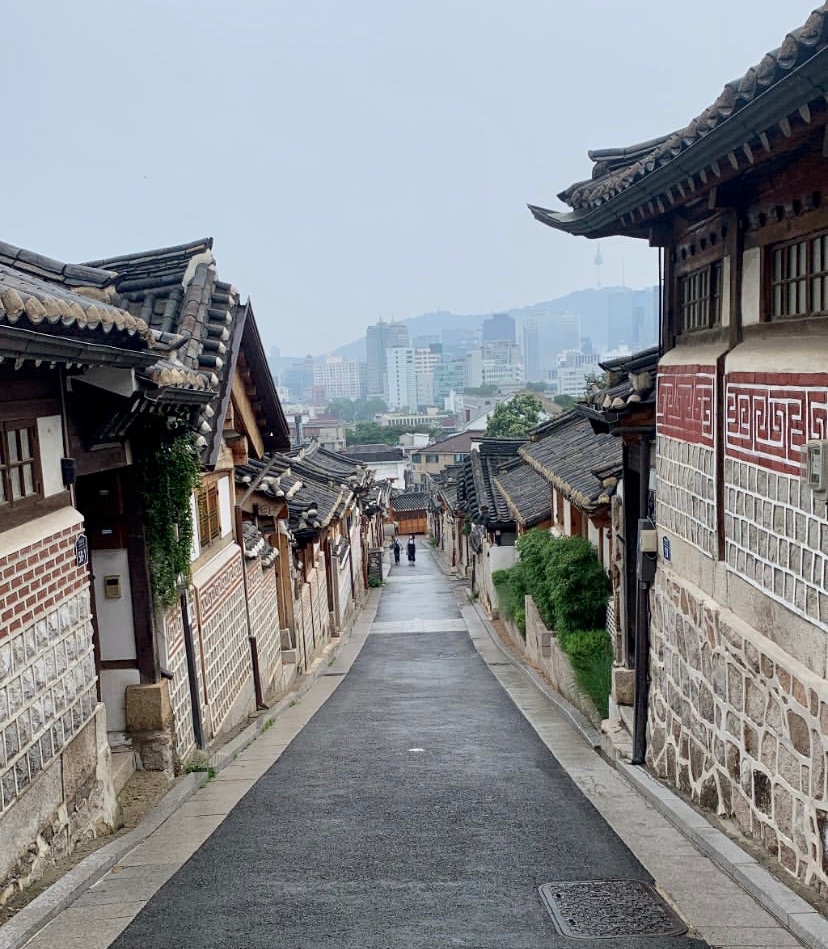
Day 5: Secret Gardens, Palaces and Shopping
Today, we’ll continue our exploration of Seoul’s rich history by visiting two more of its five grand palaces. The first stop is the Changdeokgung Palace, a UNESCO World Heritage Site known for its stunning Secret Garden. The garden was originally created as a private retreat for the royal family and has been beautifully preserved over the years. You’ll be able to stroll through this serene oasis of ponds, pavilions and walkways before exploring the rest of the palace.
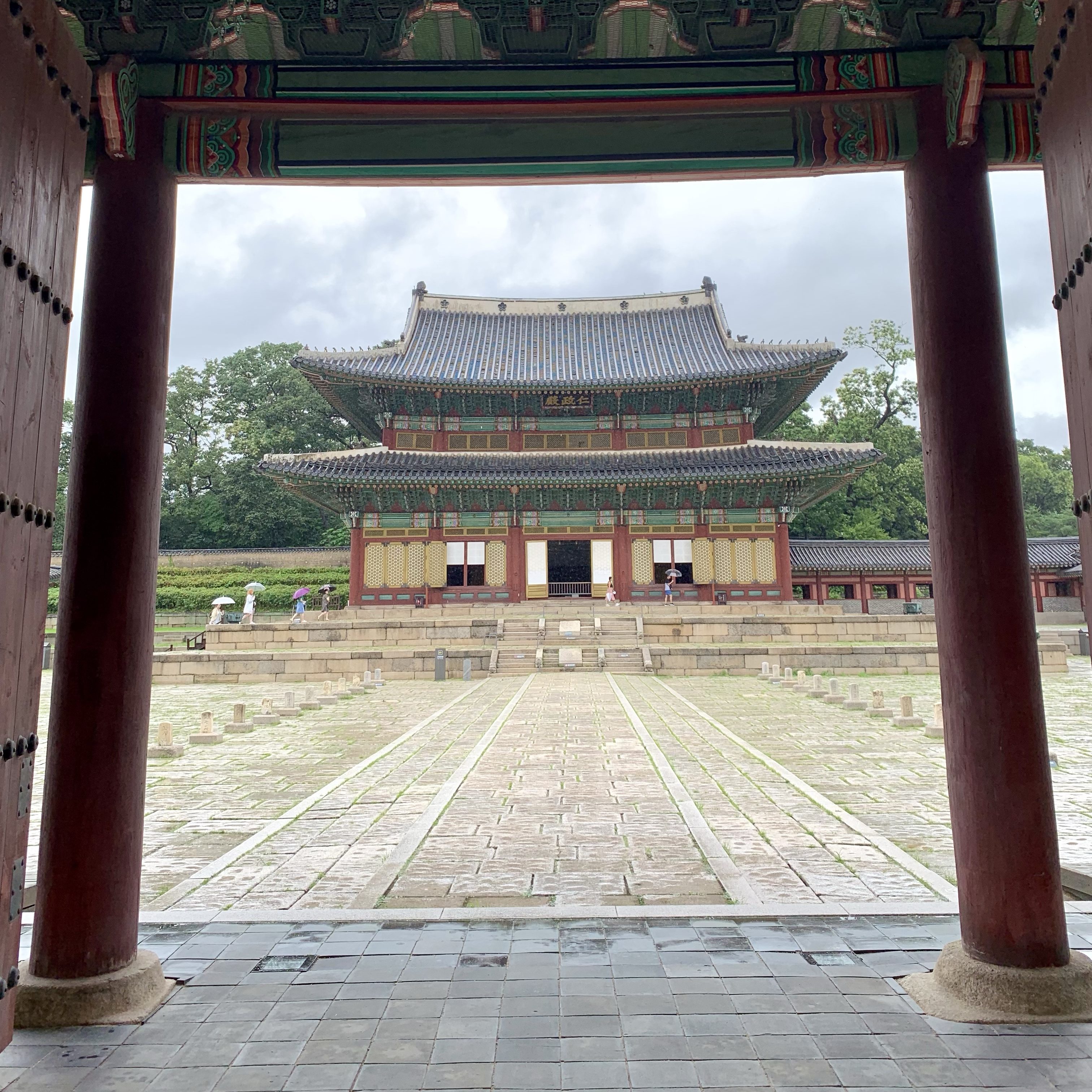
Our second palace for the day is the nearby Changgyeonggung Palace. It’s a bit smaller than the other palaces, but still very impressive. Plus, it’s located next to Seoul Forest, a massive park and nature reserve that’s a popular spot for picnics, hiking and cycling.
After all the sightseeing, it’s time for some retail therapy! We’ll head over to the famous Gangnam District, where you can shop till you drop at one of the many malls and boutiques. Be sure to check out the COEX Mall Starfield Library, an Instagram-worthy spot that features a massive bookshelf stacked with over 50,000 books.

Next, we’ll head to the trendy Sinsadong neighborhood, a great place to explore boutique shops and unique cafes.
DAY 6 – 7 | GYEONGJU
How to get to Gyeongju:
Gyeongju is easily accessible by train or bus from major cities in South Korea. The KTX train takes about 2.5 hours from Seoul and 1.5 hours from Busan. The intercity bus from Seoul takes around 4.5 hours and from Busan it takes around 1.5 hours. If you’re arriving at Incheon or Gimpo airport, you can take a bus or train to the respective stations to get to Gyeongju.
Where to stay in Gyeongju:
There are several options for accommodation in Gyeongju, ranging from budget-friendly hostels to luxury hotels. If you’re looking for a budget-friendly option, we recommend staying at Guesthouse Santa or Guesthouse Momojein. Both are located near major tourist attractions and offer comfortable and clean rooms. For a mid-range option, you can check out Benikea Gyeongju Hotel which offers great amenities and is located in a convenient area. If you’re looking for a luxurious stay, we recommend the Gyeongju Hilton or Kolon Hotel, which offer great views and top-notch facilities.
Day 6: Gyeongju – The Ancient Capital of Korea
Today we head to Gyeongju, the ancient capital of the Silla Kingdom and one of the most historically significant cities in Korea. We’ll begin our day with a stroll through Hwangnidan-Gil, a charming street filled with traditional Korean houses and modern cafes.
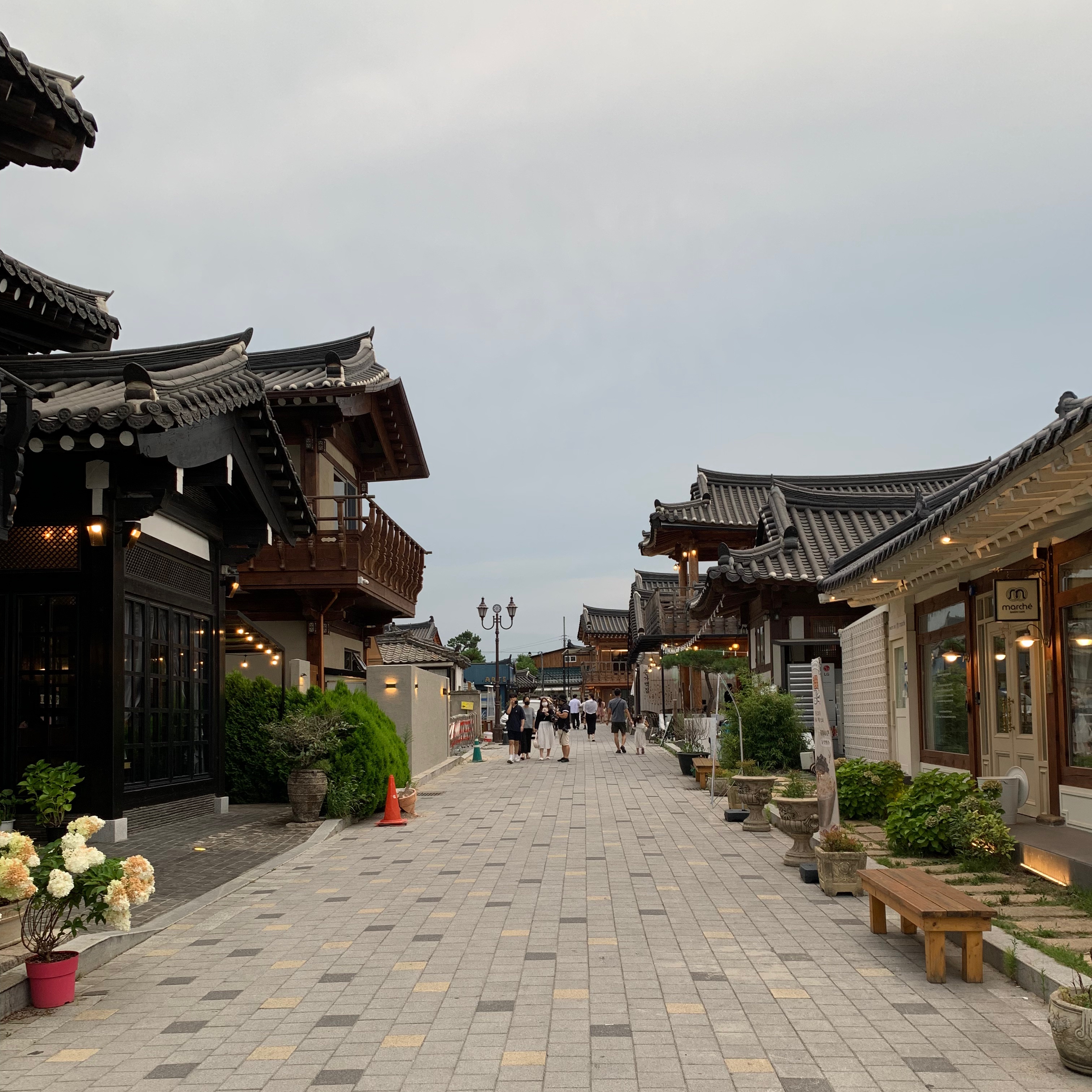
Nearby is the Daereungwon Tomb Complex, a park filled with some of the largest royal tombs from the Silla Dynasty.
Next, we’ll head to the Gyeongju National Museum, which houses over 100,000 artifacts from the Silla Dynasty. After learning about the rich history of Gyeongju, we’ll visit Donggung Palace and Wolji Pond, a beautiful park featuring a large pond, a pavilion and a palace.
Optional: End the day at the Seongdong Market and Jungang Market, where you can find everything from street food to handmade crafts.
Day 7: Bulguksa Temple and More
Today, we’ll visit one of the most famous temples in Korea, Bulguksa Temple. This UNESCO World Heritage Site is a masterpiece of Buddhist art and architecture, and a must-see for anyone visiting Gyeongju.
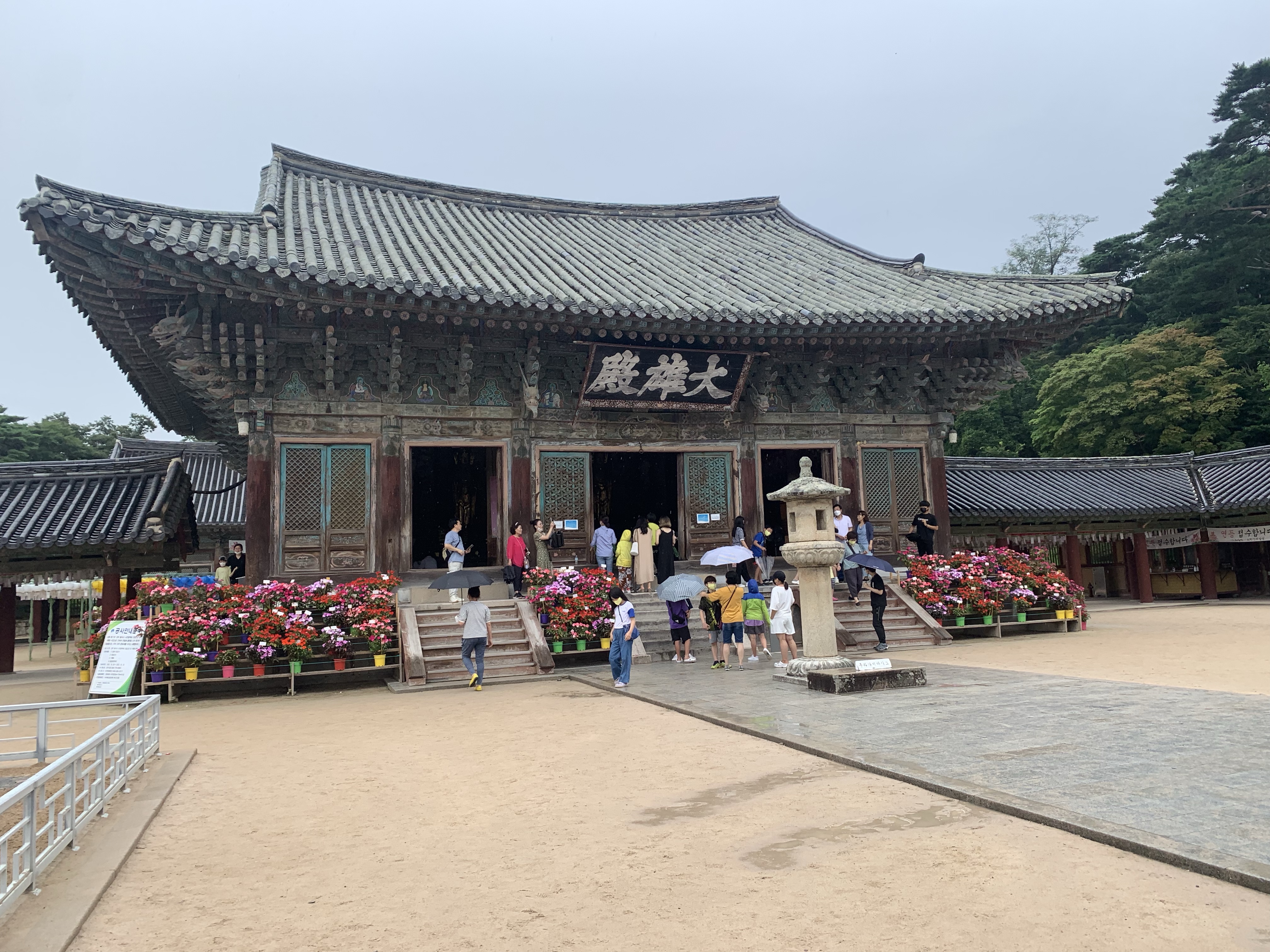
After exploring the temple, we’ll head to Seokguram, a grotto containing a large statue of Buddha. The view from the grotto is breathtaking, and you’ll be able to see the beautiful scenery of the surrounding mountains.
We’ll then head to Bukgun-dong to see the ancient Cheomseongdae Observatory, the oldest surviving astronomical observatory in Asia.
Our final stop of the day is the beautiful Woljeonggyo Bridge, a historic stone bridge that spans the scenic Woljeongcheon Stream. We recommend seeing it at night when it is fully lit up with beautiful lights.
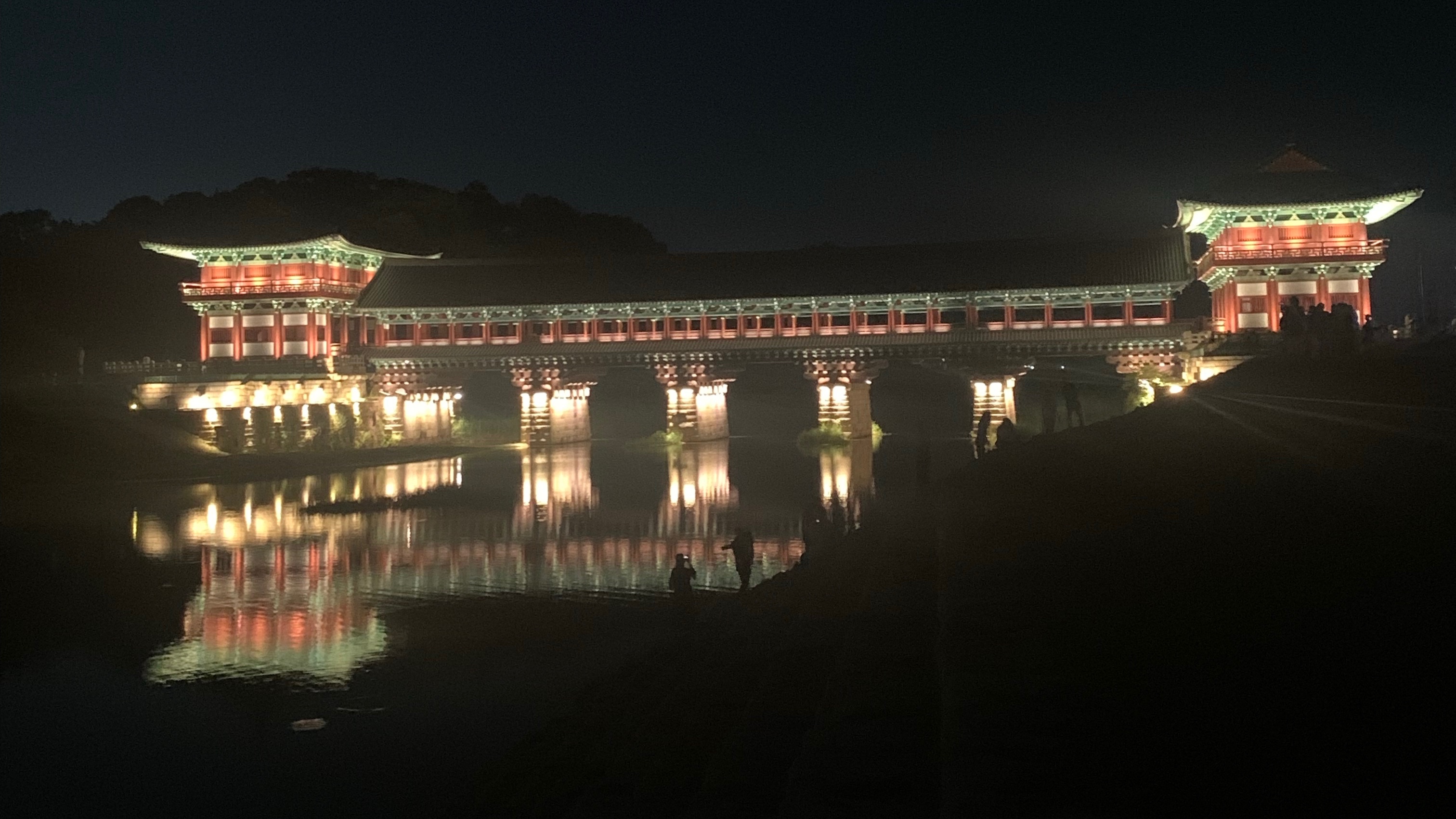
Optional: If time allows, you can also visit the Gyeongju World Culture Expo Park, which features the iconic Gyeongju Tower and many other cultural exhibits.
DAY 8 – 9 | BUSAN
How to get to Busan:
Busan is located about an hour away from Gyeongju by train. You can take the KTX or the Mugunghwa train from Singyeongju Station to Busan Station. The KTX is faster, but also more expensive, while the Mugunghwa is slower but more affordable. You can buy tickets at the station or online through the Korail website.
Where to stay in Busan:
The best areas to stay in Busan are Haeundae, Gwangalli Beach and Seomyeon.
Gwangalli Beach is a great place to stay if you want to be close to the beach and enjoy a lively atmosphere with many bars and restaurants. There are many guesthouses and hostels in the area, such as the Gwangalli Guesthouse, which is just a few steps away from the beach. The guesthouse offers dorms and private rooms, as well as a rooftop terrace with a beautiful view of the beach. You can book your stay on their website or on booking platforms like Booking.com or Agoda.
Day 8: Gamcheon Culture Village, Nampo, and Seomyeon Shopping
We started our day in Busan with a visit to Gamcheon Culture Village, also known as the “Machu Picchu of Korea.” This vibrant hillside village is filled with colorful houses, art installations, and stunning views of the city and sea. We explored the narrow streets and alleys, snapping photos and admiring the unique architecture and street art.

Next, we headed to Nampo, a bustling commercial district filled with shopping, street food, and historic landmarks. Our first stop was Bosu-dong Book Street, a quaint alley lined with bookstores and cafes. From there, we strolled through Gukje Market, one of Busan’s largest and oldest traditional markets, where we sampled some of the city’s famous seafood and haggled for souvenirs. We also visited Gwangbokdong Food Street, a popular destination for local and international cuisine, and Biff Square, home to the Busan International Film Festival.
Head to Lotte Department Store Rooftop to enjoy stunning 360 degree views of the city. We then headed to Yongdusan Park and Busan Tower, two iconic landmarks that offer panoramic views of Busan.
Day 9: Haedong Yonggungsa Temple, Haeundae Beach, Gwangalli Beach, Seomyeon at Night
We started our day with a visit to Haedong Yonggungsa Temple, one of the most beautiful and unique temples in Korea – a must see. The temple is perched on a rocky outcrop by the sea, and its scenic location and intricate architecture make it a must-visit attraction. After admiring the temple, we made our way to Haeundae Beach, one of Busan’s most popular and picturesque beaches. We enjoyed some time lounging on the beach and taking in the views.

We then made our way to Gwangalli Beach, another beautiful stretch of sand with a stunning view of the Gwangan Bridge. We soaked up the sun and enjoyed some refreshments at one of the many beachfront cafes and bars.
Head back to Seomyeon for some nighttime entertainment. We explored the bustling shopping streets and markets, taking in the lively atmosphere and trying more delicious food and drinks.
DAY 10 – 12 | JEJU ISLAND
Getting to Jeju:
The easiest way to get to Jeju from Busan is by taking a flight. There are multiple flights every day from Busan’s Gimhae International Airport to Jeju International Airport. You can easily book your flights online or through a travel agency. Another option is to take a ferry from Busan’s Ferry Terminal to Jeju Island. The ferry ride takes around 3-4 hours, and it’s a great way to enjoy the ocean views.
Where to Stay in Jeju:
Jeju has a variety of accommodation options ranging from budget-friendly hostels to luxury resorts. The most popular areas to stay in Jeju are Jeju City, Seogwipo, and Jungmun.
If you’re looking for a hostel in Jeju, check out Backpackers in Jeju City. It’s a cozy and friendly hostel that offers dorms and private rooms. They also have a shared kitchen and lounge area where you can meet other travelers.
For a mid-range option, check out the Amber Hotel in Seogwipo. The hotel is located in a convenient location, close to many of the top attractions in Seogwipo, including the Jeongbang Waterfall and the Seogwipo Traditional Market.
If you’re looking for a luxury stay, the Lotte Hotel Jeju in Jungmun is a great option. The hotel is located near the beach and offers a variety of facilities, including an outdoor pool, fitness center, and multiple restaurants.
Day 10: Jeju Island Beaches and Manjanggul Cave
Today we departed from Busan airport to Jeju Island, known for its beautiful beaches and natural wonders. We started our day by collecting our hire car from the airport, before visiting Hamdeok Beach, a stunning stretch of white sand surrounded by lush greenery. Next, we headed to Gimnyeong Beach, known for its clear blue waters and excellent swimming conditions.
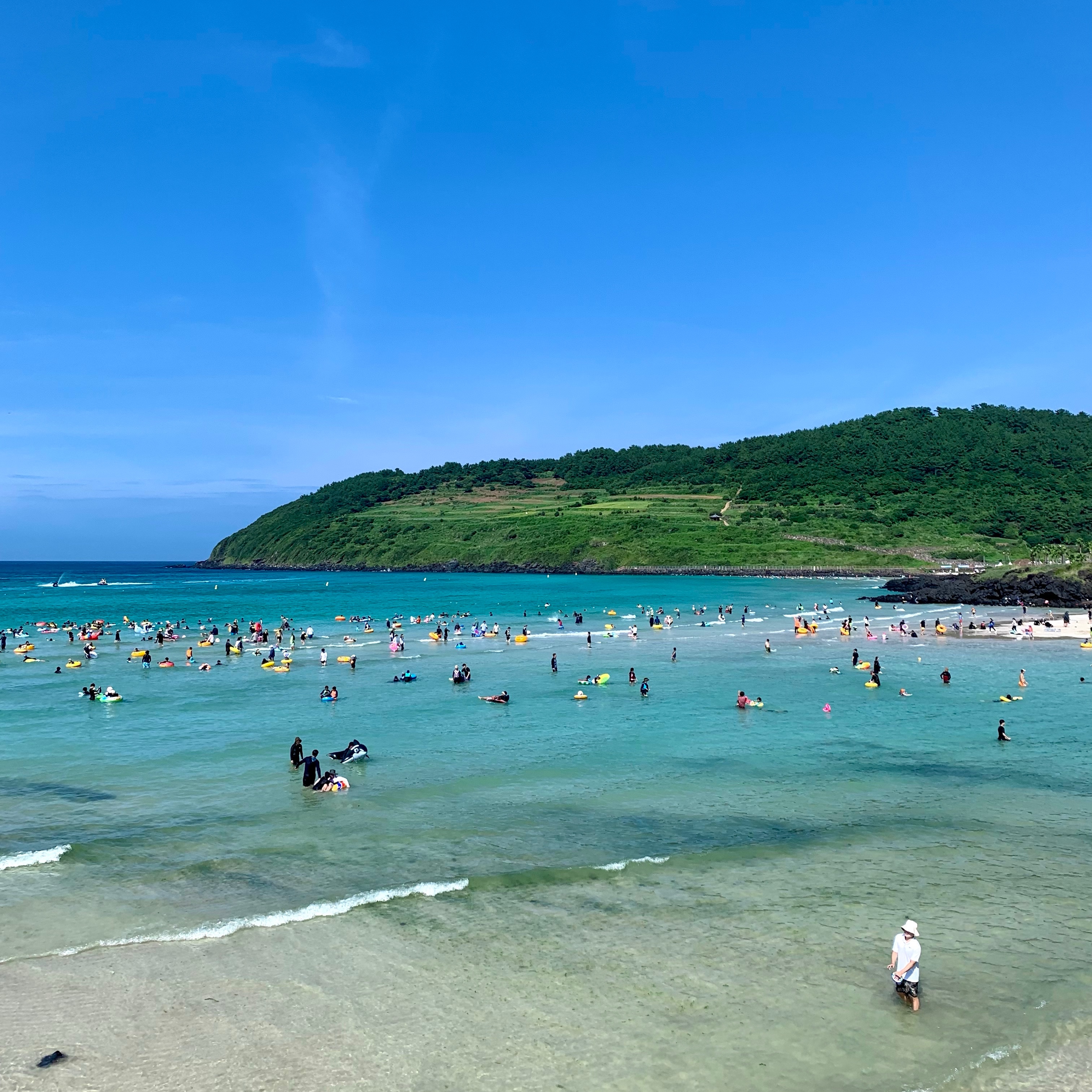
For those interested in geological wonders, we also had the option of visiting the Manjanggul Lava Cave, a UNESCO World Heritage Site. We explored the cave’s unique rock formations, lava columns, and lava flow walls before heading back to our hotel.
Day 11: Hiking and Waterfalls on Jeju Island
We started our day with a hike up Seongsan Illchulbong, also known as Sunrise Peak, a volcanic cone that offers stunning panoramic views of Jeju Island.
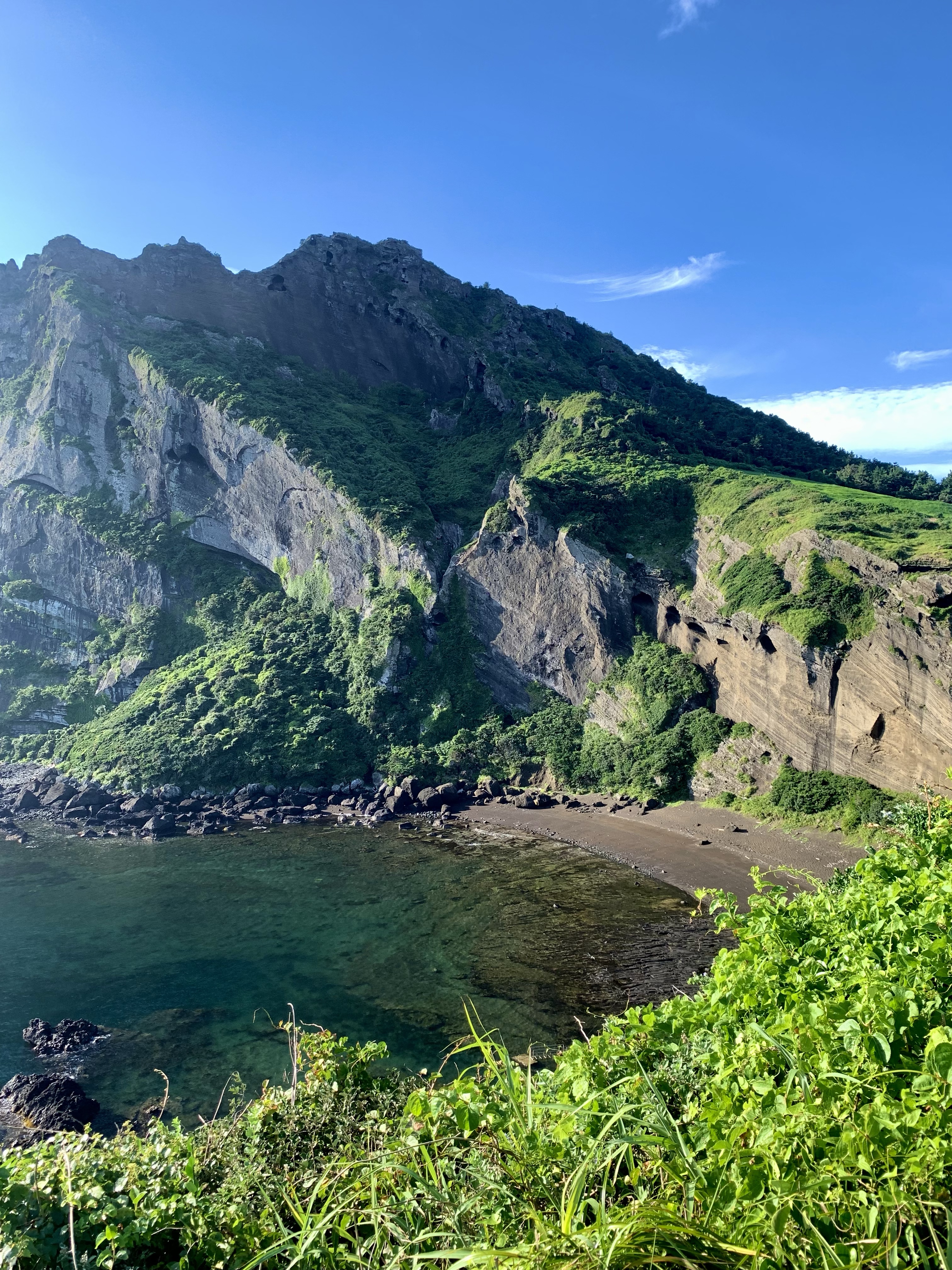
In the afternoon, we visited two of Jeju Island’s most beautiful waterfalls: Cheonjiyeon Falls and Jeongbang Waterfall. We were in awe of the natural beauty and power of these waterfalls.
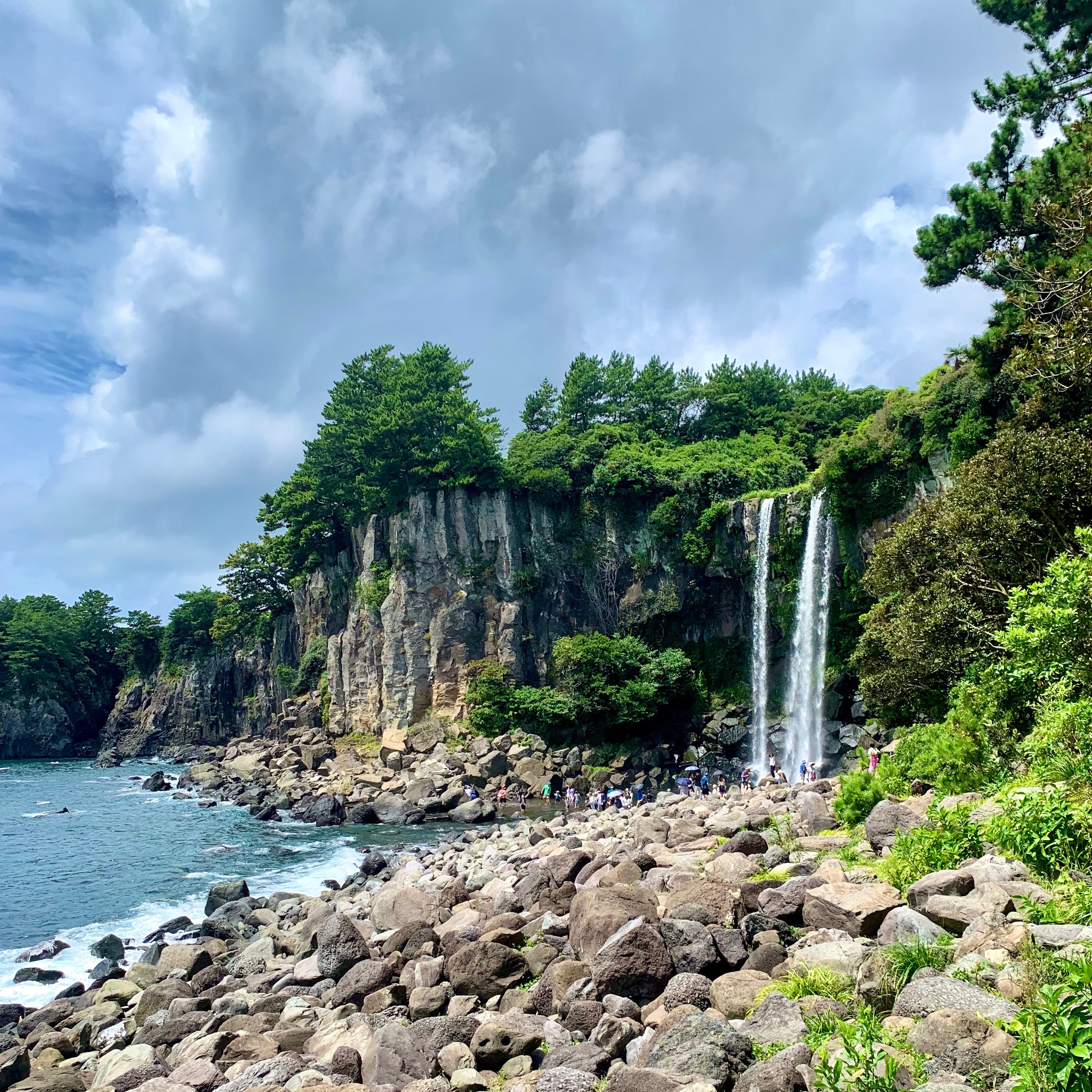
Finally, we ended the night at Olle Market in Seogwipo, a bustling night market where we could try various Jeju Island specialties, such as black pork, tangerines, and seafood. For those interested in craft beers, be sure to check out Jeju Beer Fountain just outside the markets.
Day 12: Sanbangsan Mountain Hike
We started our day early with a hike up Sanbangsan Mountain, one of the three famous mountains on Jeju Island. Sanbangsan is a volcanic mountain and its peak stands at 395 meters above sea level. The mountain is known for its stunning views of the ocean and the surrounding landscape. There are two main hiking trails to the peak, the Yeongsil Trail and the Sanbangsan Trail. The Yeongsil Trail is a more gradual ascent that takes approximately 2-3 hours to complete, while the Sanbangsan Trail is a steeper and more challenging climb that takes about 1-2 hours. We chose the Sanbangsan Trail for a more thrilling experience.
The Sanbangsan Trail begins at the base of the mountain and leads through a dense forest of evergreen trees. As we climbed higher, the path became steeper and the scenery more breathtaking. We stopped at various points along the way to admire the stunning views of the ocean and the surrounding landscape. The final stretch of the trail was the most challenging, with steep and rocky terrain leading to the peak. But the rewarding view from the top made it all worth it. At the summit, we could see the entire southern coast of Jeju Island and the endless expanse of the ocean.
Tips:
- Wear comfortable shoes with good grip, as the terrain can be steep and rocky.
- Bring plenty of water and snacks, as there are no facilities along the trail.
- Start early to avoid the midday heat and crowds.
- Check the weather forecast before heading out, as the trail may be closed in case of bad weather or strong winds.
Day 13: Fly back to Seoul
On our last full day of the trip, we took a morning flight from Jeju Island to Gimpo Airport in Seoul. After arriving in Seoul, we had some free time to explore the city and do any last-minute shopping or sightseeing and visit any of the sights and attractions we missed out on when we were in Seoul previously.
Day 14: Time to depart Korea!
Finally, we headed to the airport for our flight back home, feeling grateful for the amazing experiences and memories we made during our trip to South Korea.

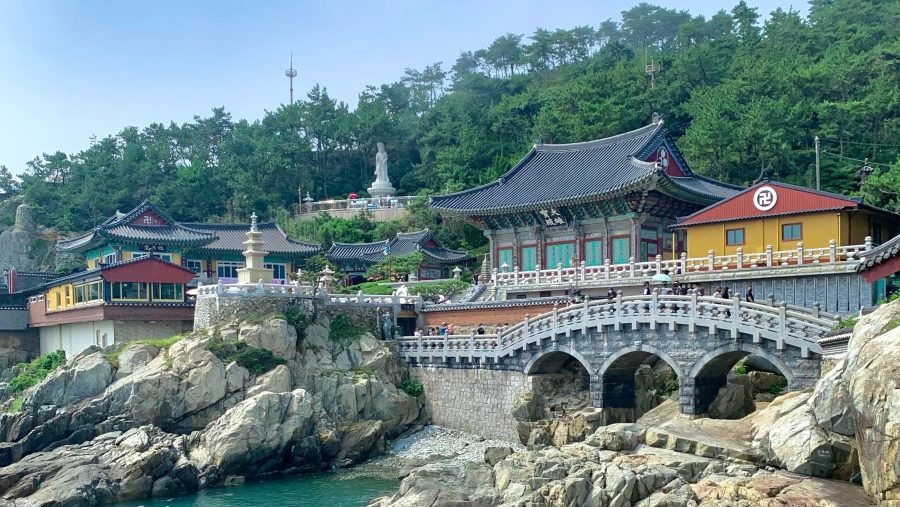
Leave a Reply